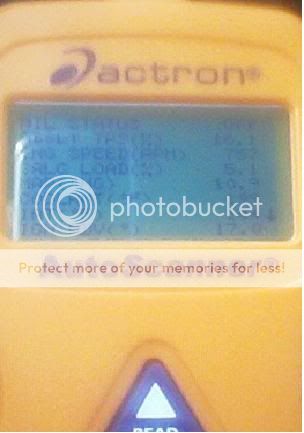vabeachtennis
NAXJA Forum User
- Location
- Va Beach
Yeah, it's easy to look up the "P0 codes". But what about the "live data" stats? How do I know what the correct "Absolute Throttle Position", "Ignition Advance", MAP, etc. stats are while at idle? I've searched here, is there a source that anyone can recommend? Here are some photos of what I am talking about:

My absolute throttle position was anywhere from 15.7-16.1 this was at idle.

You can see that my IGN ADV went from 17 to 16.5 there's other information like the "fuel trim" , 02si (v), etc. How can I interpret this information? Any help would be greatly appreciated. My wife is laughing at me because I can't figure out my new "toy".


My absolute throttle position was anywhere from 15.7-16.1 this was at idle.

You can see that my IGN ADV went from 17 to 16.5 there's other information like the "fuel trim" , 02si (v), etc. How can I interpret this information? Any help would be greatly appreciated. My wife is laughing at me because I can't figure out my new "toy".

